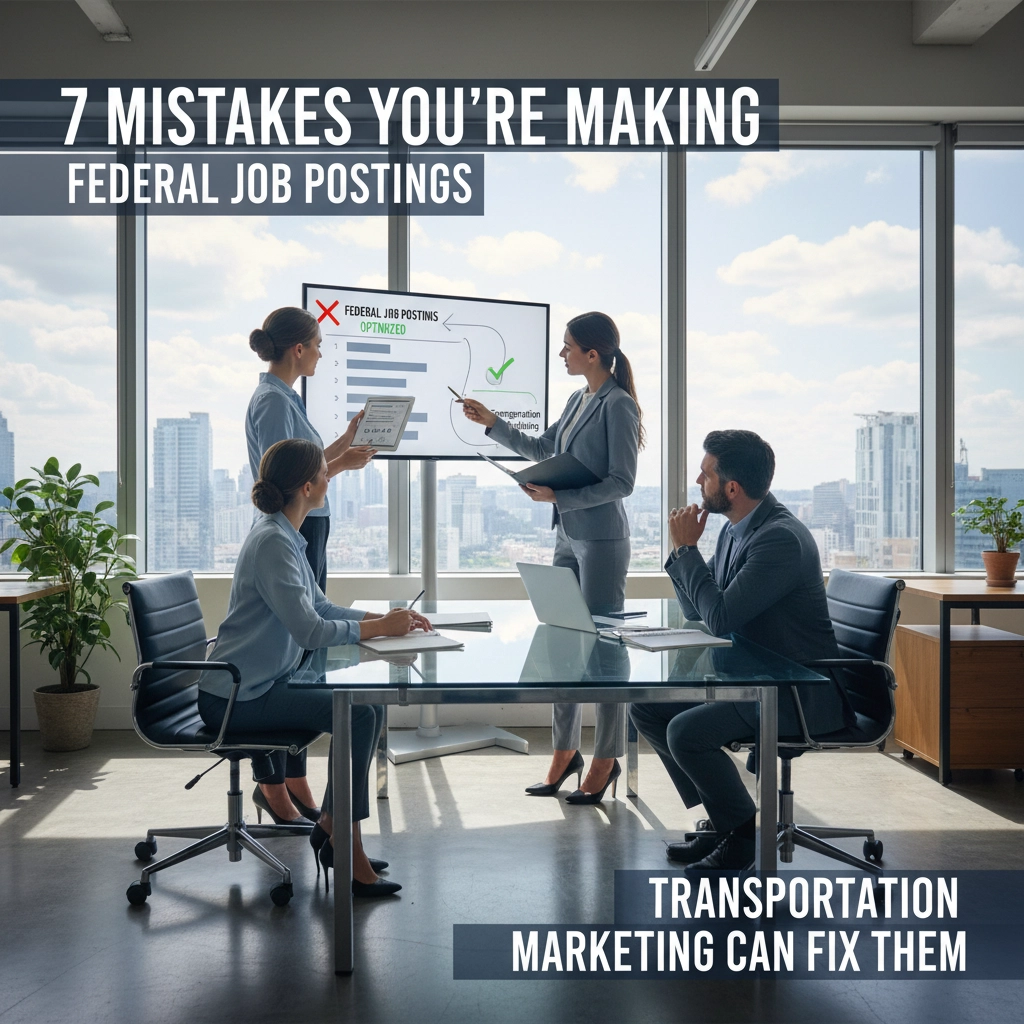Federal agencies across the United States face unprecedented challenges in attracting qualified candidates to essential government positions. The traditional approaches to federal job posting and recruitment, while historically effective, have failed to adapt to the evolving landscape of modern talent acquisition. The competitive job market, coupled with changing candidate expectations and technological advances, has rendered many conventional federal recruitment strategies ineffective or obsolete.
The complexity of federal hiring processes, combined with the specialized nature of government roles, creates unique obstacles that require innovative solutions. Transportation marketing emerges as a powerful tool to address these recruitment challenges, offering dynamic, location-specific, and highly visible advertising opportunities that traditional job posting methods cannot match.
Mistake 1: Relying Exclusively on Digital Job Boards
Federal agencies frequently limit their recruitment efforts to established digital platforms such as USAJOBS and traditional job boards. This approach significantly restricts the reach of job postings, particularly among candidates who are not actively seeking employment or who may not regularly visit these specialized platforms. The passive job seeker market, which represents a substantial portion of qualified candidates, remains largely untapped through these conventional digital-only strategies.
Transportation marketing provides a solution by reaching potential candidates in their daily commutes and routine travel patterns. Mobile billboards, transit advertising, and highway signage create awareness among individuals who may not be actively job searching but possess the qualifications and experience that federal agencies require.

Transportation marketing captures the attention of passive candidates who might never visit traditional job posting websites, expanding the talent pool significantly beyond conventional recruitment boundaries.
Mistake 2: Using Overly Complex Government Terminology
Federal job postings often contain excessive bureaucratic language, technical jargon, and complex qualification requirements that discourage potential applicants. The use of federal pay grades, obscure job series numbers, and government-specific terminology creates barriers for candidates who may be highly qualified but unfamiliar with federal employment conventions. This linguistic complexity particularly affects private sector professionals who might otherwise consider transitioning to government service.
Transportation marketing campaigns can simplify messaging by focusing on core job benefits, mission-driven work, and essential qualifications using accessible language. Mobile advertising allows for concise, compelling messages that highlight the most attractive aspects of federal employment without overwhelming potential candidates with bureaucratic complexity.
Mistake 3: Inadequate Geographic Targeting
Many federal agencies fail to implement effective geographic targeting in their recruitment efforts, either casting too wide a net or focusing too narrowly on specific metropolitan areas. This approach results in inefficient allocation of recruitment resources and missed opportunities to connect with qualified candidates in underserved regions. The assumption that all qualified candidates reside in major metropolitan areas overlooks significant talent pools in smaller cities and rural areas.
Transportation marketing excels in geographic precision, allowing federal agencies to target specific highways, transit routes, and geographic corridors where desired candidates are most likely to travel. This targeted approach ensures that recruitment messages reach the intended audience while optimizing budget allocation and campaign effectiveness.
Mistake 4: Poor Timing and Campaign Duration
Federal recruitment campaigns often suffer from inadequate timing strategies, with job postings appearing during periods when target candidates are less likely to be considering career changes. The rigid federal hiring timelines, combined with lengthy application processes, create additional challenges in maintaining candidate interest and engagement throughout the recruitment cycle.
Transportation marketing provides flexibility in campaign timing and duration, allowing agencies to maintain visibility throughout extended hiring processes. The ability to adjust messaging, locations, and timing based on recruitment needs and candidate response patterns offers significant advantages over static job posting approaches.

Mistake 5: Failure to Showcase Organizational Culture
Traditional federal job postings typically focus on technical requirements and administrative details while failing to communicate the organizational culture, mission impact, and professional development opportunities that attract high-quality candidates. The emphasis on compliance and procedure often overshadows the meaningful work and career advancement potential that federal employment offers.
Transportation marketing campaigns can effectively showcase organizational culture through visual storytelling, highlighting federal employees in action, demonstrating mission impact, and emphasizing the professional growth opportunities available within government service. This approach creates emotional connections with potential candidates that traditional text-based job postings cannot achieve.
Visual marketing through transportation channels allows federal agencies to demonstrate their organizational culture and mission impact in ways that traditional job postings simply cannot accomplish.
Mistake 6: Limited Candidate Demographics Engagement
Federal recruitment efforts frequently fail to engage diverse candidate demographics effectively, particularly younger professionals, veterans transitioning to civilian careers, and underrepresented groups. The traditional job posting approach lacks the dynamic, engaging elements that resonate with different generational preferences and cultural backgrounds.
Transportation marketing offers versatility in reaching diverse demographics through strategic placement in various geographic and cultural areas. The visual nature of transportation advertising allows for inclusive messaging that appeals to different candidate groups while highlighting the federal government's commitment to diversity and inclusion.
Mistake 7: Insufficient Follow-Through and Candidate Nurturing
The final critical mistake involves inadequate follow-through after initial candidate interest generation. Federal agencies often lack comprehensive candidate nurturing strategies that maintain engagement throughout lengthy hiring processes. The disconnect between initial recruitment efforts and ongoing candidate communication results in significant talent loss during extended evaluation periods.
Transportation marketing can support comprehensive candidate nurturing campaigns by maintaining visibility and reinforcing messages throughout the hiring process. The sustained presence of recruitment messaging in candidates' daily environments helps maintain interest and engagement during extended federal hiring timelines.

Implementation Strategies for Transportation Marketing
Successful integration of transportation marketing into federal recruitment strategies requires careful planning, strategic placement, and message optimization. Agencies must identify key transportation corridors where target candidates travel regularly, develop compelling visual messaging that complements traditional job posting content, and establish metrics for measuring campaign effectiveness.
The coordination between transportation marketing campaigns and traditional recruitment efforts creates a comprehensive approach that addresses the limitations of single-channel strategies. This integrated approach maximizes recruitment reach while providing multiple touchpoints for candidate engagement and information gathering.
Transportation marketing represents a significant opportunity for federal agencies to overcome traditional recruitment challenges and access previously untapped candidate pools. The combination of geographic precision, demographic targeting, and sustained visibility addresses many of the limitations inherent in conventional federal job posting approaches.
The investment in transportation marketing for federal recruitment yields measurable returns through increased candidate quality, expanded applicant pools, and improved hiring outcomes. Federal agencies that embrace these innovative recruitment strategies position themselves advantageously in the competitive talent acquisition landscape while fulfilling their mission-critical staffing requirements more effectively.

